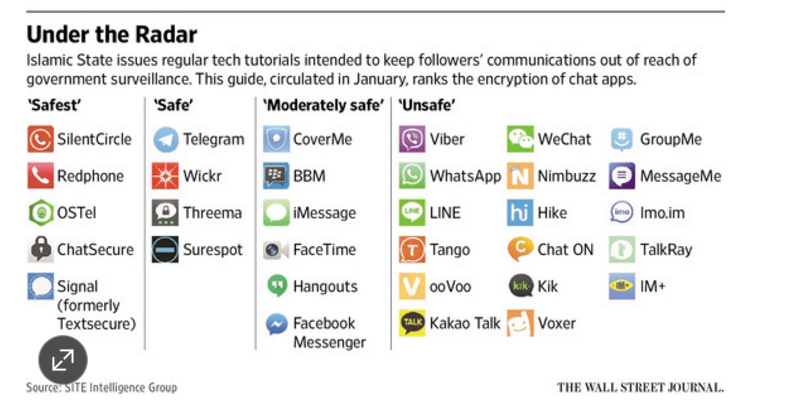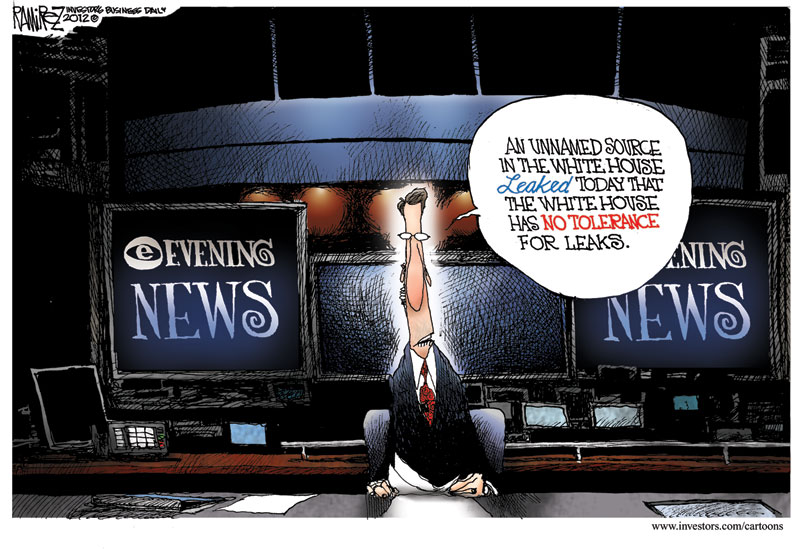The recent terrorist attacks in Paris have raised new questions about safety and security in a globally connected world. According to an article in yesterday’s New York Times, readily available encryption is easy to use, and impossible to access even by government agents with warrants.
Some of the most powerful technologies are free, easily available encryption apps with names like Signal, Wickr and Telegram, which encode mobile messages from cellphones. Islamic State militants used Telegram two weeks ago to claim responsibility for the crash of the Russian jet in the Sinai Peninsula that killed 224 people, and used it again last week, in Arabic, English and French, to broadcast responsibility for the Paris carnage.
Another report, this one published in the Wall Street Journal, provided the following graphic to show which apps are most secure, and therefore most likely to be deployed by those intent on avoiding the attention of military and police counter-terrorism forces.

A lower-tech approach to terrorist communications is to use the online gaming platforms, e.g. PS4, to share information. According to this approach the terrorist are counting on the sheer volume of messages using similar violent language to mask their terrorist communications.
Meanwhile the cyber-hacking group Anonymous is waging its own war on ISIS. “Vowing to silence extremist propaganda and expose undercover operatives,” Anonymous claims to have deleted 5,500 Twitter accounts that had been used by ISIS. In a video just released they warned, “Expect massive cyber attacks. War is declared. Get prepared.”
According to the WSJ,
The bloodshed in Paris will likely exacerbate a tense debate between governments that want inside access to those encrypted tools and tech companies that say [they] are trying to protect customer data and are wary of government overreach.
What do you think? Does personal privacy trump security, or vice versa?

 CSU-Pueblo MCCNM alum Daneya Esgar (class of 2001) is co-sponsoring legislation before the Colorado state legislature. Before becoming a State Representative, Esgar was a news producer for local affiliate KOAA-TV. In her new role Esgar is promoting legislation that expand protection for citizen journalists and ordinary citizens who may find themselves eye witnesses to law enforcement agencies working in the local community.
CSU-Pueblo MCCNM alum Daneya Esgar (class of 2001) is co-sponsoring legislation before the Colorado state legislature. Before becoming a State Representative, Esgar was a news producer for local affiliate KOAA-TV. In her new role Esgar is promoting legislation that expand protection for citizen journalists and ordinary citizens who may find themselves eye witnesses to law enforcement agencies working in the local community.
